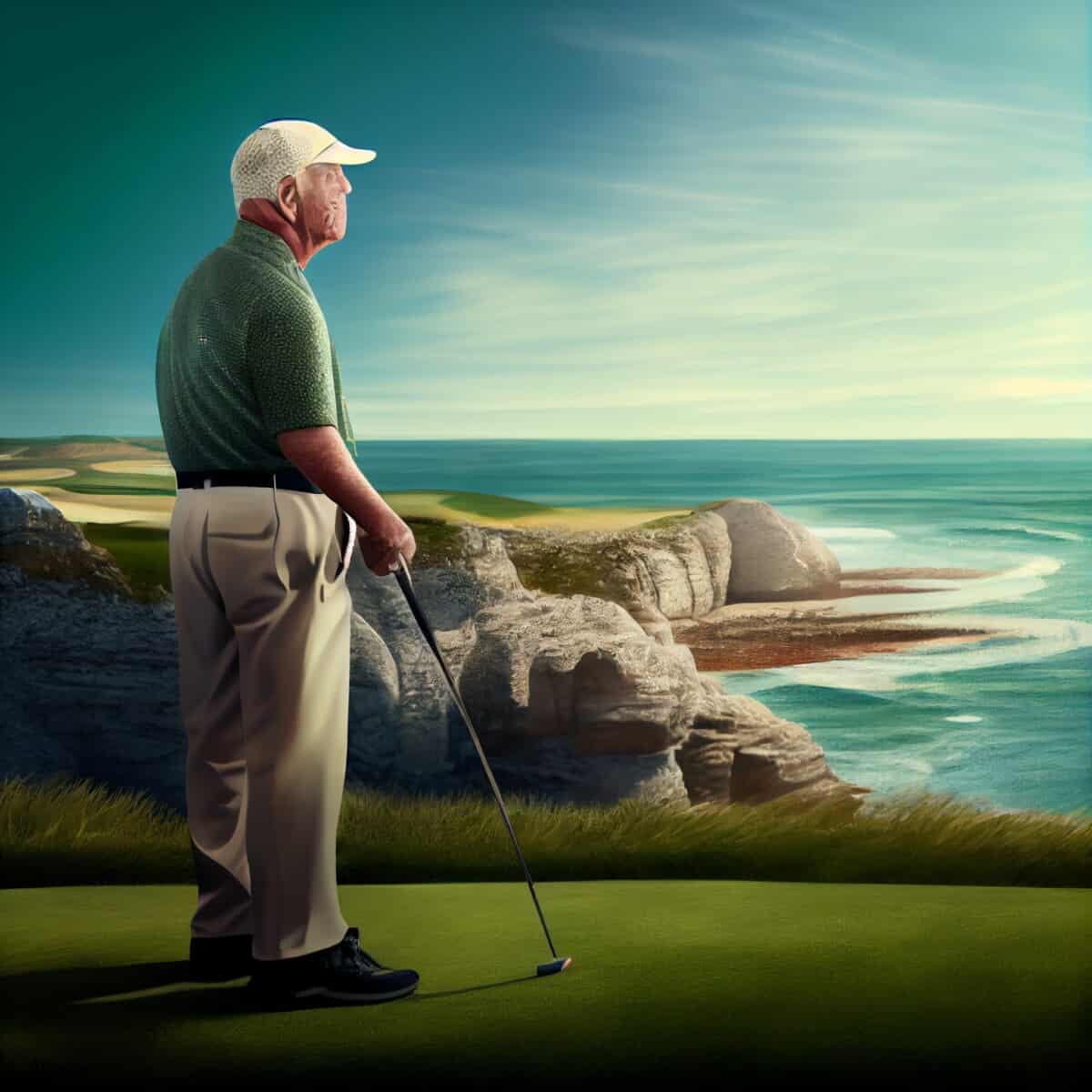
Watching any golf tournament on TV will likely see a few players using an open-stance golf swing. This type of swing is becoming increasingly popular, especially among amateur golfers. But what exactly is an open-stance golf swing, and why should you consider using it?
In this post, we’ll take a closer look at the open-stance golf swing and explain why it can be a great option for players of all levels. We’ll also discuss some pros and cons of this swing, so you can decide if it’s right for you.
Open Stance Golf Swing 101
As any golfer knows, the key to a good swing is hitting the golf ball squarely. However, achieving this can be challenging, especially for beginners. One way to improve your chances of making solid contact is to use an open golf stance swing.
This involves positioning your feet, so they are slightly more than shoulder-width apart and pointing your front foot’s toe outwards. From this position, you can make a more natural swing that is less likely to result in a slice or hook.
In addition, an open stance can help you to generate more power by giving you a wider base. As with any golf swing, it takes practice to perfect an open stance, but it can be a helpful technique for improving your game.
Open vs. Closed vs. Square Stance
Golf stance is a personal preference based on your natural ability, flexibility, and comfort. Some golfers reduce their options by insisting on one type of stance, but adapting your stance to the shot at hand is key to a successful golf swing. The three main types of stances are open, closed, and square.
An open stance is when your feet are pointed away from the target, and your body is turned so that your front shoulder is lower than your rear shoulder. An open stance gives you more power because you can cock your wrists more on the backswing. It also helps you hit down on the ball for more spin. The downside to an open stance is that it reduces accuracy because you have less control over the clubface. If you normally slice the ball, an open stance will exaggerate this tendency.
A closed stance is the opposite of an open stance: Your feet are pointed toward the target, and your shoulders are squared up. A closed stance gives you more control over the clubface but less power because you can’t cock your wrists as much on the backswing. If you tend to hook the ball, a closed stance will exaggerate this tendency.
A square stance falls between an open and closed stance: Your feet are parallel to the target line, and your shoulders are square. A square stance gives you a good combination of power and control.
However, if you tend to slice or hook the ball, a square stance will only do a little to correct this problem. Ultimately, it’s up to you to experiment with all three stances to see which one feels most comfortable and gives you the best results.
Benefits of An Open Stance
When it comes to playing golf, there are a variety of different swings that players can use. One common swing is known as an open stance. This involves positioning your feet slightly open, with your front left foot pointing slightly toward the target.
There are several benefits to using an open stance, including improved accuracy and more power.
An open stance’s most significant benefit is that it gives you a better view of the ball. This can be especially helpful when trying to hit a long straight shot or navigate obstacles.
In addition, an open stance can help you generate more power, allowing you to make a fuller turn. As a result, professional golfers often use an open stance to maximize their distance. While it may take some time to get used to, an open stance can be a great way to improve your game.
How To Start An Open Stance Swing
An open stance golf swing begins with your feet intentionally positioned wider than shoulder-width apart and the clubface slightly open at address. Both of these adjustments are made to promote a bombs-away draw.
You take the golf club back and around to the inside from this position, maintaining the relationship between your feet, hips, and shoulders. Keeping the club close to your body allows you to maintain control throughout the swing and hit accurate shots.
As you reach the top of your backswing, your weight should have shifted to your right leg. The club should be pointing well left of the target (for a right-hander). This will help ensure that you hit the ball squarely and with power.
You can shift your weight as you return to the left. This will help you control your downswing and ensure you hit the ball precisely.
If you keep the clubface from shutting too soon, an open-stance golf swing should produce a nice, high draw that gives you plenty of extra distance. And who doesn’t love extra distance?
What Effect Does An Open Stance Have?
When it comes to golf, your stance is everything. How you position your feet can significantly impact your outside-in swing path, clubface, ball position, ball flight, trajectory, distance, and control. Therefore, it is important to ensure that your feet are positioned correctly to improve your game.
An open stance is when your feet point outwards, away from the target. This type of stance allows for a greater range of motion and mobility and more power behind your swings.
This can be helpful if you’re struggling with a hook or slice, as it will help you square up the clubface at impact. If your clubface is not squared up at impact. You will likely hit the ball off-center, causing it to veer off in an unwanted direction. By ensuring that your clubface is properly aligned. You can improve your chances of hitting the ball where you want it to go.
An open or closed stance can also make it difficult to generate power and control the direction of your golf shot. This is because when your feet point toward the target. It can take effort to transfer your weight from one foot to the other, making it difficult to hit the ball precisely.
To improve your game, it’s important to experiment with different stances and find the best one.
Conclusion
The open-stance golf swing is a relatively new technique that has been gaining popularity on the professional golf circuit in recent years. While it does take some getting used to, this swing can offer certain benefits over the traditional closed stance approach.
If you’re interested in trying it, be sure to do your research and practice before hitting the links for an important tournament!
🖐 We want to hear from you! Let us know your comments below ⬇️

ABOUT THE AUTHOR
Jim has been an avid golfer and golf fan for over 40 years. He started a YouTube channel called Golf Plus about a year ago and it has been wildly successful. It only made sense to expand and reach more golfers with this site and social media. You can learn more about Jim and Golf Plus Media Group by visiting our About Page.







Comments (2)
Fitness Secrets of Pro Golferssays:
May 12, 2023 at 9:55 am[…] strong core is the key to a powerful golf swing. It helps you maintain stability and generate force during your swing. So, let’s dive into […]
Golf Drills For Hip Rotationsays:
May 29, 2023 at 7:52 am[…] the hip rotation is the real secret behind that perfect swing. It’s a critical aspect of the golf swing as it drives the power from the ground up, giving your swing more speed and your ball more […]